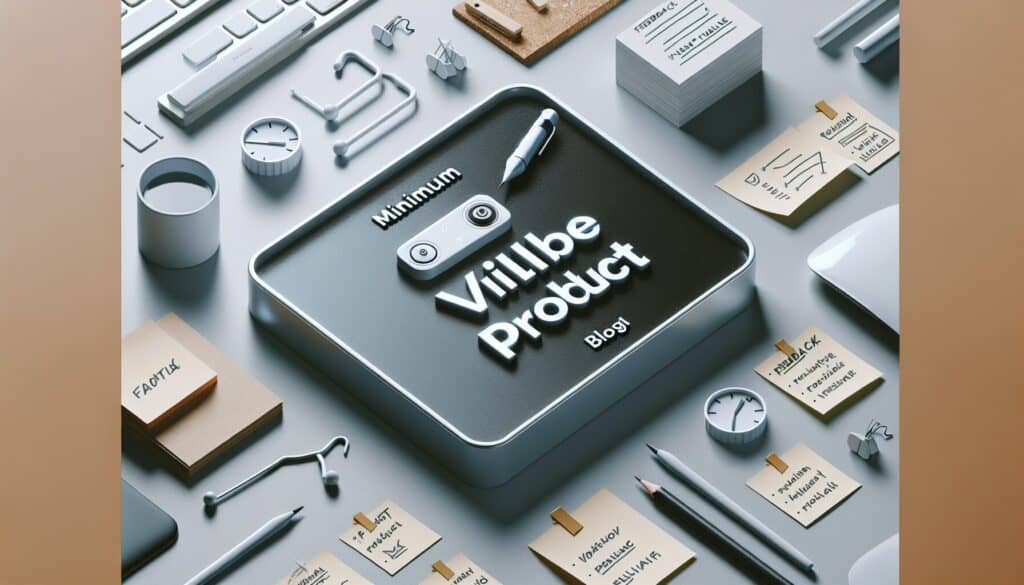Lanzar un nuevo producto con las características justas para atraer a los primeros clientes y validar una idea de producto en una fase temprana del ciclo de desarrollo.
- Metodologías: Clientes y marketing, Economía, Diseño de producto
Producto Mínimo Viable (PMV)

Producto Mínimo Viable (PMV)
- Metodología ágil, Desarrollo ágil de productos, Desarrollo iterativo, Producto Mínimo Comercializable (PMV), Producto Mínimo Viable (PMV), Creación de prototipos, Experiencia de usuario (UX), Diseño centrado en el usuario, Validación
Objetivo:
Cómo se utiliza:
- Los equipos de desarrollo crean una versión básica del producto con funcionalidades básicas para probar hipótesis, recabar opiniones de los usuarios y saber qué resuena entre el público objetivo con una inversión mínima de recursos.
Ventajas
- Valida rápidamente las ideas de producto, minimiza los costes y riesgos de desarrollo, facilita el aprendizaje y la iteración basados en datos reales de los usuarios.
Contras
- Riesgo de lanzar un producto demasiado básico y decepcionar a los usuarios, posibilidad de impresiones iniciales negativas si no se gestiona bien, puede no ser suficiente para probar la verdadera demanda del mercado.
Categorías:
- Ideación, Lean Sigma, Resolución de problemas, Diseño de producto
Ideal para:
- Probar rápidamente una hipótesis básica del producto y recabar las opiniones de los usuarios con el mínimo esfuerzo y recursos.
El Producto Mínimo Viable (Jugador Más Valioso (MVP)) methodology is often utilized in sectors such as technology, consumer goods, and healthcare, where rapid iteration based on user feedback is paramount to success. This approach is particularly beneficial during the product development phase, allowing teams to test assumptions about user needs and feature preferences with a basic version of their offering. For example, a tech startup may release a simplified mobile application stripped of advanced features, focusing instead on core functionalities that address a specific problem. This enables the company to gather crucial data on user interactions and satisfaction, informing subsequent development with minimal initial investment. Typically, the initial MVP development is initiated by product managers or entrepreneurs, but it ideally involves a cross-functional team including designers, developers, and marketing professionals who can contribute diverse perspectives on usability and marketability. Industries such as fintech and e-commerce frequently adopt this strategy, as rapid shifts in consumer preferences necessitate efficient validation of new concepts. Gathering user feedback from MVP testing can lead to iterative improvements, ensuring that final products are more aligned with market demand, thus reducing costly pivots later in the development process. The ability to engage users early with a tangible product, even in its most basic form, creates a foundation for ongoing dialogue and innovation.
Pasos clave de esta metodología
- Identify the core problem to solve based on market needs.
- Define the key features required to address the identified problem.
- Create a prototype with essential functionalities for quick development.
- Launch the MVP to a selected audience for initial feedback.
- Monitor user interactions and gather qualitative feedback.
- Analyze data to validate or invalidate product hypotheses.
- Iterate on the product by refining features based on feedback.
- Repeat the process with subsequent versions to enhance the product.
Consejos profesionales
- Conduct in-depth user interviews prior to MVP development to identify pain points and expectations, ensuring that core features genuinely address user needs.
- Implement A/B testing rapidly within the MVP to evaluate different variations of features, allowing data-driven decisions for prioritizing enhancements.
- Incorporate a robust analytics framework from the outset to capture user interaction data, enabling informed iterations that align with user behavior and preferences.
Leer y comparar varias metodologías, recomendamos el
> Amplio repositorio de metodologías <
junto con otras más de 400 metodologías.
Sus comentarios sobre esta metodología o información adicional son bienvenidos en la dirección sección de comentarios ↓ , así como cualquier idea o enlace relacionado con la ingeniería.
Contexto histórico
1949
1950
1950
1960
1960
1960
1960
1940
1950
1950
1958
1960
1960
1960
1960
(si se desconoce la fecha o no es relevante, por ejemplo "mecánica de fluidos", se ofrece una estimación redondeada de su notable aparición)















Publicaciones relacionadas
Cuestionarios sobre molestias musculoesqueléticas
Pruebas multivariantes (MVT)
Análisis de regresión múltiple
Sistemas de captura de movimiento
Método MoSCoW
Prueba de la mediana de Mood